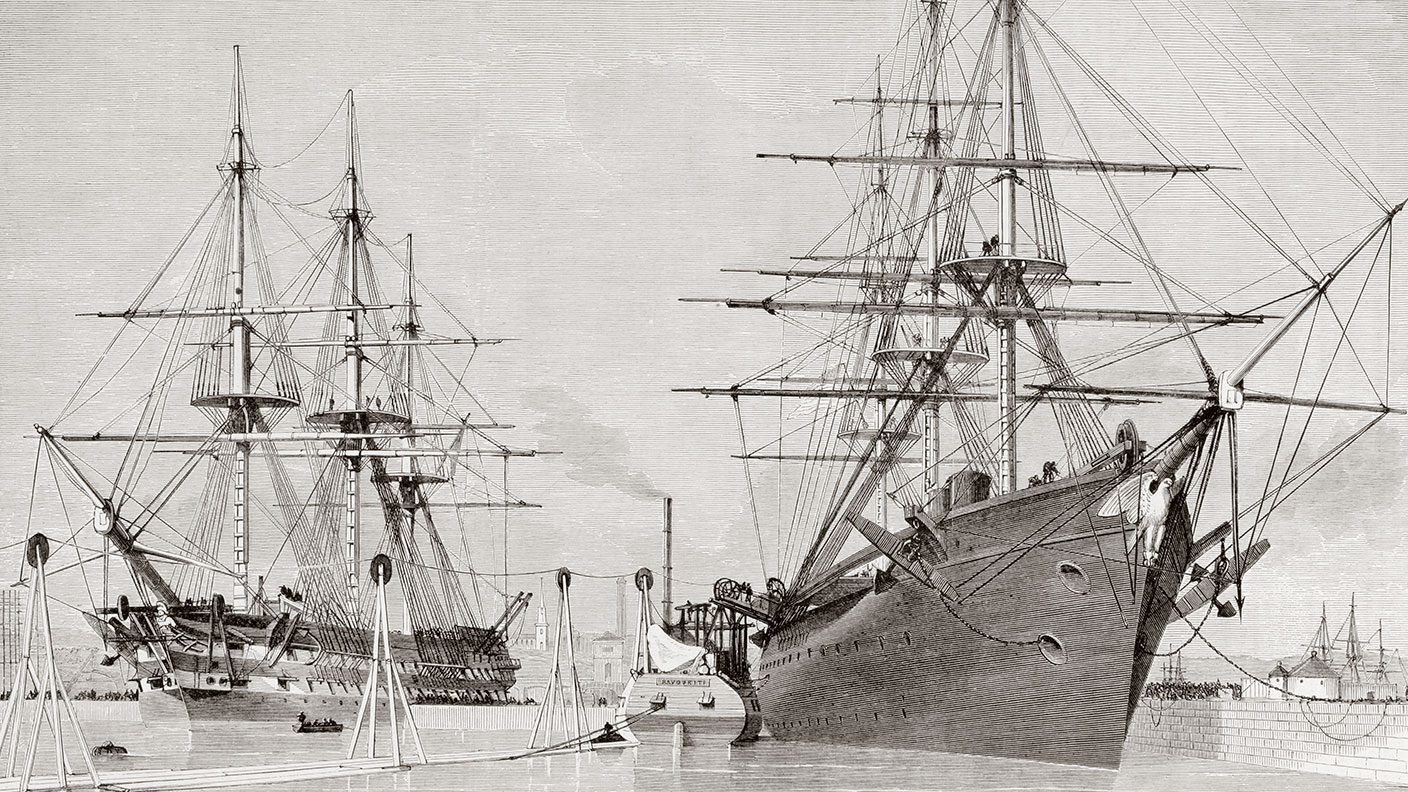5 August 1858: the first transatlantic telegraph cable is completed
On this day in 1858, HMS Agamemnon and the USS Niagara completed the mammoth task of laying the first transatlantic telegraph cable.


In the summer of 1858, HMS Agamemnon and the USS Niagara met in the middle of the Atlantic.
They joined two ends of telegraph cable together, and then sailed away in opposite directions. In their wake, they each paid out hundreds of miles of cable.
Not that a telegraph cable linking Europe to North America was exactly a new idea. Samuel Morse, of Morse code fame, had proposed the idea 18 years earlier. And by 1850, a cable spanned the English Channel. But America, thousands of miles to the west, was another matter altogether. In fact, it wasn't even certain that a signal could be sent over such a long distance.
MoneyWeek
Subscribe to MoneyWeek today and get your first six magazine issues absolutely FREE

Sign up to Money Morning
Don't miss the latest investment and personal finances news, market analysis, plus money-saving tips with our free twice-daily newsletter
Don't miss the latest investment and personal finances news, market analysis, plus money-saving tips with our free twice-daily newsletter
But American entrepreneur Cyrus West Field, who had already made his fortune manufacturing paper, was nothing if not ambitious. He set up the Atlantic Telegraph Company with the sole aim of making the idea reality.
The British government subsidised the project to the tune of £1,400 a year, while Field secured funding from the US Congress by the skin of his teeth (there was just one vote in it). He sold shares in the company, and stumped up a quarter of the cash himself.
Laying the cable was far from easy. Two attempts had already failed, because the cable broke, but the third attempt that summer was more successful.
On 5 August 1858, HMS Agamemnon landed at Valentia Island in southwest Ireland, while the USS Niagara had arrived in Newfoundland the day before. The cable was ready for its first transmission.
Enter Queen Victoria. On 16 August, Her Majesty sent the first message down the wire to US President James Buchanan, proclaiming that "Europe and America are united by telegraphy" but as it turned out, not for long.
Electricity was used to propel the message. To overcome a weak signal, the power was turned up too high, and the cable was destroyed. It had been operational for just three weeks.
The setback put off investors from putting more money into the venture, and the transatlantic telegraph cable was abandoned. A more durable cable would be laid in 1866.
Get the latest financial news, insights and expert analysis from our award-winning MoneyWeek team, to help you understand what really matters when it comes to your finances.

-
 ‘Why I have ditched my Help to Buy ISA for cash savings and the stock market’
‘Why I have ditched my Help to Buy ISA for cash savings and the stock market’Without the 25% bonus, my Help to Buy ISA is effectively redundant, says MoneyWeek writer Sam Walker.
-
 Is your inheritance tax allowance cut if you sell to downsize or sell your home to pay for care?
Is your inheritance tax allowance cut if you sell to downsize or sell your home to pay for care?Downsizing relief is a little-known benefit that could save your loved ones tens of thousands of pounds in inheritance tax after you’ve died.
-
 31 August 1957: the Federation of Malaya declares independence from the UK
31 August 1957: the Federation of Malaya declares independence from the UKFeatures On this day in 1957, after ten years of preparation, the Federation of Malaya became an independent nation.
-
 13 April 1960: the first satellite navigation system is launched
13 April 1960: the first satellite navigation system is launchedFeatures On this day in 1960, Nasa sent the Transit 1B satellite into orbit to provide positioning for the US Navy’s fleet of Polaris ballistic missile submarines.
-
 9 April 1838: National Gallery opens in Trafalgar Square
9 April 1838: National Gallery opens in Trafalgar SquareFeatures On this day in 1838, William Wilkins’ new National Gallery building in Trafalgar Square opened to the public.
-
3 March 1962: British Antarctic Territory is created
Features On this day in 1962, Britain formed the British Antarctic Territory administered from the Falkland Islands.
-
10 March 2000: the dotcom bubble peaks
Features Tech mania fanned by the dawning of the internet age inflated the dotcom bubble to maximum extent, on this day in 2000.
-
9 March 1776: Adam Smith publishes 'The Wealth of Nations'
Features On this day in 1776, Adam Smith, the “father of modern economics”, published his hugely influential book The Wealth of Nations.
-
 8 March 1817: the New York Stock Exchange is formed
8 March 1817: the New York Stock Exchange is formedFeatures On this day in 1817, a group of brokers moved out of a New York coffee house to form what would become the biggest stock exchange in the world.
-
7 March 1969: Queen Elizabeth II officially opens the Victoria Line
Features On this day in 1969, Queen Elizabeth II took only her second trip on the tube to officially open the underground’s newest line – the Victoria Line.